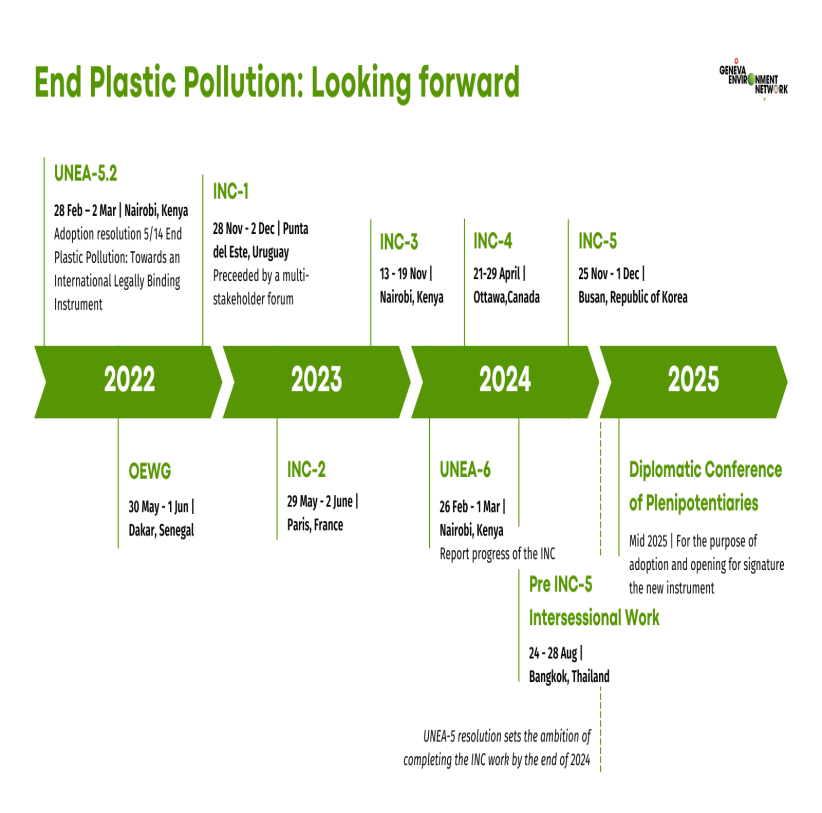Global Treaty on Plastic Pollution Faces Challenges
Why in the news?
Over 170 countries are negotiating a treaty to address plastic pollution, with key debates over production limits, financial support, and national regulations, particularly involving India’s stance.
Introduction to Global Plastic Pollution:
- Over 170 countries are negotiating a legally binding global treaty to curb plastic pollution, with a focus on marine pollution.
- The negotiations, which started in 2022, are set to conclude in 2024 under the UN Environment Assembly (UNEA).
- Plastic production has soared globally, with a forecasted rise to 700 million tonnes by 2040, causing significant environmental and health hazards.
- Plastic takes up to 500 years to decompose, and less than 10% is recycled, contributing to microplastics and pollution in rivers and oceans.
Global Plastics Treaty and Its Objectives:
- Initiative: Involves over 175 UN member nations.
- Goal: Eliminate plastic pollution globally.
- Deadline: Aims to finalise a legal document by the end of
- Objectives:
- Decrease plastic production.
- Cut unnecessary plastic uses.
- Prohibit harmful chemicals.
- Set recycling targets.
Understanding Plastic Pollution:
- Global Crisis: Threatens environment, health, and livelihoods.
- Life-cycle Approach: Impacts all stages, from production to disposal.
- Single-use Plastics: Include bags, containers, and PET bottles.
- Microplastics: Tiny particles from various sources like tires, products, and industrial processes.
UN Data on Plastic Pollution:
- 2,000 garbage trucks of plastic dumped daily.
- 19-23 million tonnes of plastic waste enter aquatic ecosystems annually.
- 2 billion tonnes produced since the 1950s; 7 billion tonnes wasted.
- 85% of recycling is done by informal workers.
OECD Data:
- 353 million tonnes of plastic waste produced in
- 9% recycled; 50% in landfills; 19% incinerated.
India Data:
- India generates 46 million tonnes of plastic waste yearly.
- 40% of plastic waste remains uncollected.
- Single-use plastic production increased by 6 million tonnes annually (2019-2021).
United Nations Environment Assembly (UNEA):
- Highest decision-making body on the environment.
- Includes all 193 UN Member States and key stakeholders.
- Meets biennially in Nairobi, Kenya.
- Created in 2012 from the Rio+20 conference.
- Sets global environmental agenda and policy guidance.
Sources Referred:
PIB, The Hindu, Indian Express, Hindustan Times




